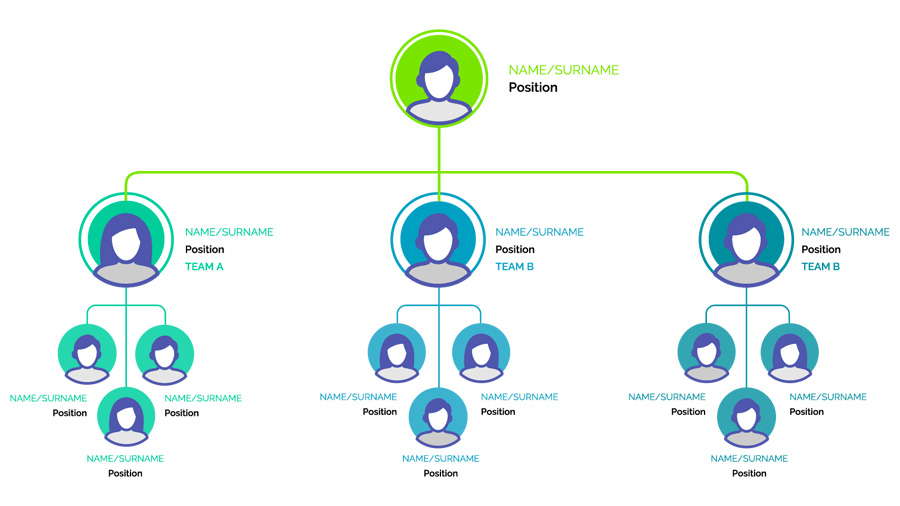
The organisation chart of an industrial company is the graphical display of the relationship between all employees. It is also used to show the relationship of one department to another and to visualise schematically the hierarchical order of the company.
In general, the industrial sector is one of the most orderly and systematised sectors in existence, as the importance of having such a complex organisation well organised has become more and more important over time. A bad structure has a negative effect on productivity and thus on competitiveness. If you think that the organisation chart of your industrial company is not yet well defined, it is necessary to take the time to do it in detail.
Likewise, if you are part of a recently created company and you still have doubts about the type of organisation chart your company should have, in this article we are going to present some of the most common ones. Getting your organisation chart right is almost as important as choosing the right machinery you need!

Although there are many ways to classify and design the organisation chart of a company, we will focus on the most essential: the hierarchy of the organisation. These are the most frequent typologies.
This is the most common, as it follows an easy-to-understand pyramidal design. This organisational chart facilitates communication between superiors and subordinates, as well as being visually clearer, although it is also more rigid when it comes to defining the functions of each worker.
When the organisation is simple, there is no need to complicate it. This is ideal if you have few departments. The aim is not to over-bureaucratise the industry when this does not serve the purpose of producing more and better.

This is a typical organisation chart in large industrial companies, with more than one director, more than one manager per project, or more than one superior per department or worker. Its ability to include interdepartmental relationships can be very beneficial for the development of joint projects. It must be very well detailed in order not to generate confusion when it comes to managing responsibilities.
An organisational chart without middle management, leaving only two roles; managers and employees. It implies a much more direct relationship, providing more autonomy to workers. Logically, it can only be carried out in small industrial companies, such as small self-employed and artisans. Even in this type of organisation chart, it is possible for managers to be involved in production tasks as well.
Before getting down to work, you need to be very clear about the type of company you are and which of the above organisation charts is most suitable for you. Keep in mind that the type of organisation chart can evolve over time, so if your company grows you may need to change it, for example from a hierarchical to a matrix organisation chart.
You should also be aware that there are many different ways to represent an organisation chart. The most common are:
The organisational chart should make clear the roles and implications of each worker in each project, their responsibilities, their tasks and who they report to. The managers of each department should be part of the creation of the organisation chart, as they are the ones who know best which profiles depend on them.
Once the organisation chart is finalised, all employees should be aware of it and have it accessible so that they can consult it at any time.

